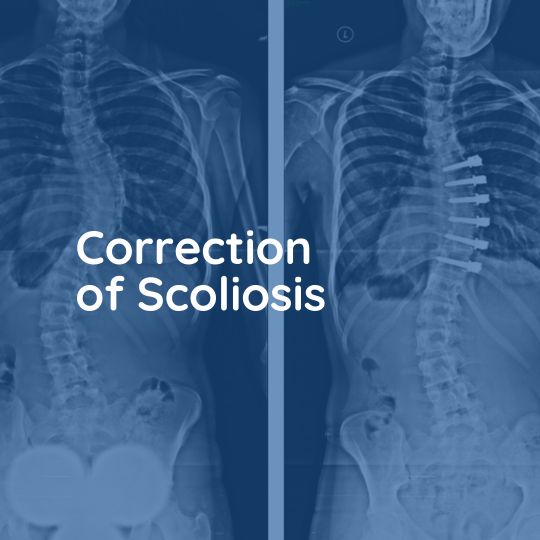
Correction of Scoliosis
Scoliosis means a curve in the spine which is abnormal, bending the spine sideways and often causing pain as a result. If the curvature is very bad breathing can be affected due to the compression of the chest. This condition may run in families, females being more affected and often skips a generation. It typically starts in adolescence and may progress very rapidly over weeks or even days. Another type of scoliosis affects adults later in life, known as degenerative scoliosis. This does not tend to progress as quickly as the adolescent form, but may still cause pain and postural problems.
Causes
Symptoms
Treatment
Causes
The cause of scoliosis is often unknown, but it can be related to genetic factors or neuromuscular conditions. It may also develop as a result of a spinal injury or infection.
Symptoms
The symptoms of scoliosis can vary depending on the severity of the curvature, but may include uneven shoulders, uneven hips, a visible curve in the spine, and back pain.
Treatment
Treatment for scoliosis may depend on the severity of the curvature and the age of the patient. Mild cases may only require monitoring to ensure that the curvature does not worsen, while more severe cases may require bracing or surgery. In cases where surgery is necessary, the goal is to correct the curvature of the spine and stabilize it using rods, screws, and other hardware.
The Operation
This is one of the biggest challenges facing the spine surgeon. The exact operation will vary greatly with the site and extent of the curve, whether it is mobile or fixed and whether other considerations, such as chest problems, spinal cord compression or anatomical variations, such as abnormally formed vertebral bodies are present.
The operation involves straightening the spine, fixing it in a straighter position and allowing it to heal there by using bone graft. It can be performed anteriorly, through the chest (and/or abdomen), posteriorly through an incision over the spine or as a combination of the two in the more complex cases. During the operation the spinal cord function is routinely monitored to ensure that the changes in position do not adversely affect its function.
The fixation is performed using metalwork, usually a combination of rods supporting the position with screws, hooks or wires fixing the bones to the rods. A detailed discussion with the surgeon is required to understand the individual operations.
Results of Surgery
The correction of the spinal deformity is usually quite impressive. The patient notices that they are in a better alignment, but also that they are taller than before. The fusion needs to be supported by wearing a brace until the bone has healed. This may take several months, depending upon the extent of the surgery, after which physiotherapy is needed to regain power
More Spinal Conditions

Spine Tumor Surgery in Karachi: Leading the Way with Prof. Dr. Akbar Ali Khan, Best Neurosurgeon in Pakistan

Advancing Spinal Health: Understanding Vertebrectomy with Prof. Dr. Akbar Ali Khan
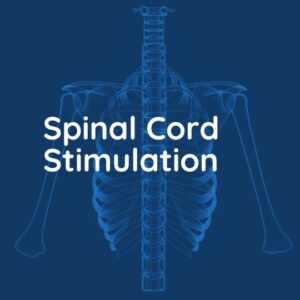
Spinal Cord Stimulation

Kyphoplasty and Vertebroplasty

Vertebrectomy/Corpectomy

Foraminotomy
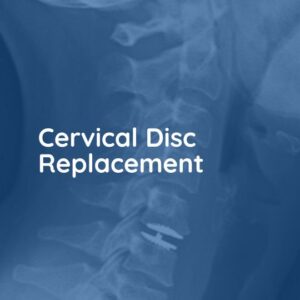
Cervical Disc Replacement

Anterior Cervical Discectomy and Fusion
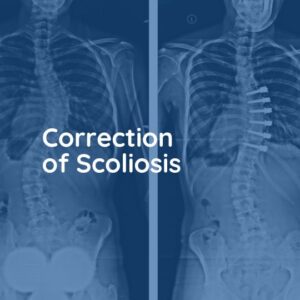
Correction of Scoliosis

Thoracic Discectomy
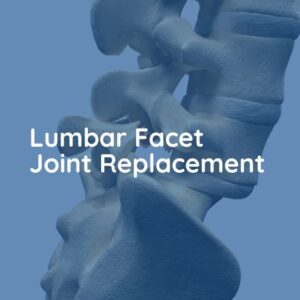
Lumbar Facet Joint Replacement
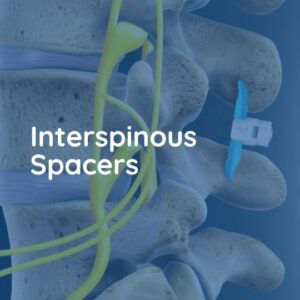
Interspinous Spacers

Endoscopic Lumbar Discectomy

Laminectomy

Disc Replacement Operation

Posterior Lumbar Fusion


